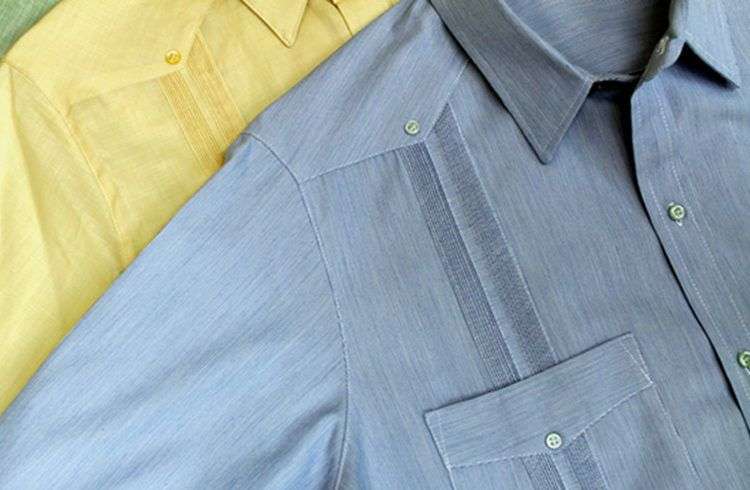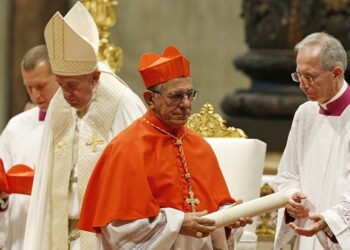In 2010, the Cuban government established the guayabera (a loose lightweight shirt) as official outfit in diplomatic ceremonies.
In Sancti Spiritus province, by the shore of the Yayabo River that splits the city in two, there is a house that, among pintucks shaping carefully arranged and catalogued shirts, treasures as much history and myths as guayaberas. Since 2012, the Quinta de Santa Elena, surrounded by stone bricked streets and the smell of the river, became the House of Guayaberas, institution that owns a collection of about 200 pieces, among shirts, documents and photographs, and champions the Cuban origins of guayaberas.
Among the pieces, there are shirts of many personalities that have been donated to the collection, or that the House has been able to recover through relatives and friends. Some of them belonged to Latin American presidents such as Rafael Correa or even Raul Castro, or intellectuals and artists like Alicia Alonso, Nicolas Guillen, Gabriel Garcia Marquez, etc. The list is as large as the myths around the origins of guayaberas, which precisely start on the shores of the Yayabo River.
Ever since the Cuban government established it as official outfit in diplomatic ceremonies by Decree Law No. 279, it has gained more prominence. Nowadays, it is possible to say it made its way back into fashion in Cuba, with a larger number of designs, very expensivethough. In order to reveal some mysteries about its origin and its presence in the Cuban society, OnCuba met with Carlos Figueroa, director of the House of Guayaberas in Sancti Spiritus.
“The guayabera has been object of thorough studies and the history around it is full of myths. Absolutely all historic references from the early beginning of the XVIII talk about the famous story of the Andalucian marriage of Jose Perez Rodriguez (Joseito) and EncarnacionNuñez Garcia who settled by the shore of the Yayabo, in which he asked his wife to make him a loose and comfortable shirt to keep his tools. Let’s say that’s the oldest antecedent”.
“To me that’s really odd, I mean, the fact that someone had taken note of this kind of events by the early beginning of the XVIII century. However, that’s the oldest reference known today, and after that there is a gap till the end of the XIX century. We are talking about almost a hundred years or even more without making reference to guayaberas.
“It is also mentioned in El Cucalambe, by the early XIX century, which everyone knows. Let’s just say that Joseito’ and Encarnacion’s story as well as El Cucalambe, are the strongest mythological evidence there is. El Cucalambe couldn’t have written that poem because he passed away in 1862 and the Independence War began in 1868 and the poem talks about the rebels from that time. All of the sudden there were pictures and they tried to prove those rebels wore them, but they didn’t, they wore light ponchos, similar to the Spanish”.
Then, when did serious evidence on the use of guayaberas emerged?
The big boom was by the end of the XIX century with the end of the war, because if we take a look back in history, all veterans from the Independence War in Cubacan be identified wearing guayaberas.
It is said that Marcos Garcia –a man from Sancti Spirituswho favored annexation–, around 1890 summoned a meeting against Spain at the theater of the province and asked all the participants to wear guayaberas, but there is not graphic evidence, though there are references in the press from that time, mostly about the term guayabera (variation of yayabera, the original name).
Its design varied depending on the areas, for instance it has been called camagueyana (in reference to the province of Camaguey), or trochana (in reference to the Trocha from Jucaro to Moron in Ciego de Avila province). In Havana, a specific design is called guayabana, it doesn’t have pockets up, only two below.
Then, you are of the opinion that it comes from Sancti Spiritus?
There is no evidence confirming that it comes for Sancti Spiritus, but there is nothing to deny it either. Everyone says it is, there are no doubts about it.
The truth is it was modified here and our people took it as theirs. In fact, the most important manufacturer called King of Guayaberas in Cuba was Ramon Puig, native of Zaza del Medio in Sancti Spiritus. He migrated to the United States after the triumph of the Revolution and established in Calle 8 in Miami the famous House of Guayaberas where he continued working till last year when he passed away at the age of 93.
What is a must in guayaberas?
I think pintucks are essential, the use of buttons (a guayabera must have more than 25 buttons), and an important element, very much talked about and in my opinion quite right: the Cuban guayabera demands a set of five pintucks and they all start and end in a triangle with a button, as a symbol of our flag. Besides, the Cuban guayabera must be white and must have between 27 and 29 buttons, depending on the sleeves (long or short).
How did the idea for the House of Guayaberas and its collection emerge?
The House of Guayaberas is circumstantial. We were a sociocultural project by that same name, and we worked in the Jesus Maria neighborhood, and then we were given the Quinta de Santa Elena, in the historic center of the city, and we had to support ourselves. Then, we created a local development project, which is the House, with the museum, an art gallery, a sewing workshop, a snack bar, a grill, etc., plus cultural and training activities we arrange”.
The collection emerged in 2007, with the help of Ciro Bianchi and his wife, but it continued gaining strength and relevance. It is an institutional collection, it doesn’t belong to the patrimony direction and it comprises about 200 pieces, which include documents and pictures, etc.
Do you think it is possible to talk about a rescue of this outfit?
I think yes, the fact that we managed to have a decree in 2010 declaring it an official outfit, has been the best result of all the work we did in Sancti Spiritus for restoring the position of the guayabera within the patrimony of the province. Today, we are still making our best efforts in order to appoint July 25 as the official day of guayaberas, though in Sancti Spiritus we have celebrated it for years.
Where is the problem? In the market. Designers actually make a really work, but it’s only for those who can afford them. A guayabera, the cheapest, costs 30 Cuban convertible pesos (CUC). Unless the economic situation changes and designers manufacture their pieces for the youth, this outfit will never gain popularity among them and thus bring it back into fashion.
In 2012, the Quinta de Santa Elena became the House of Guayaberas.










